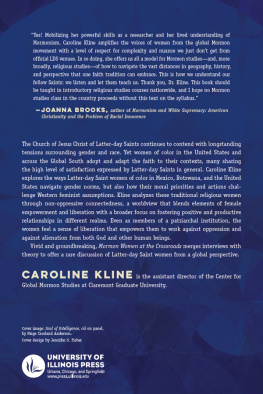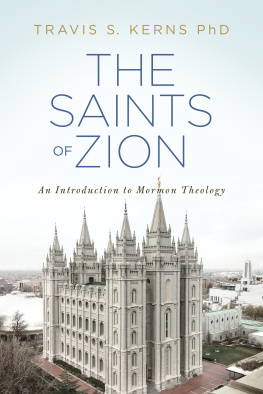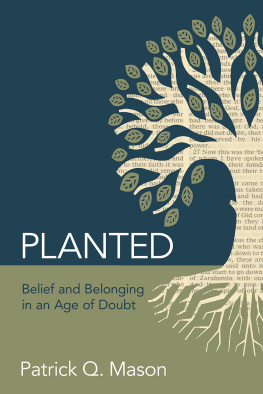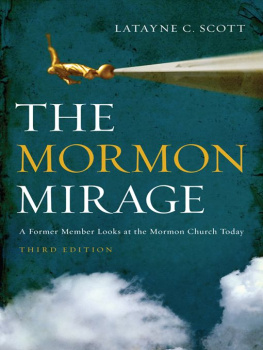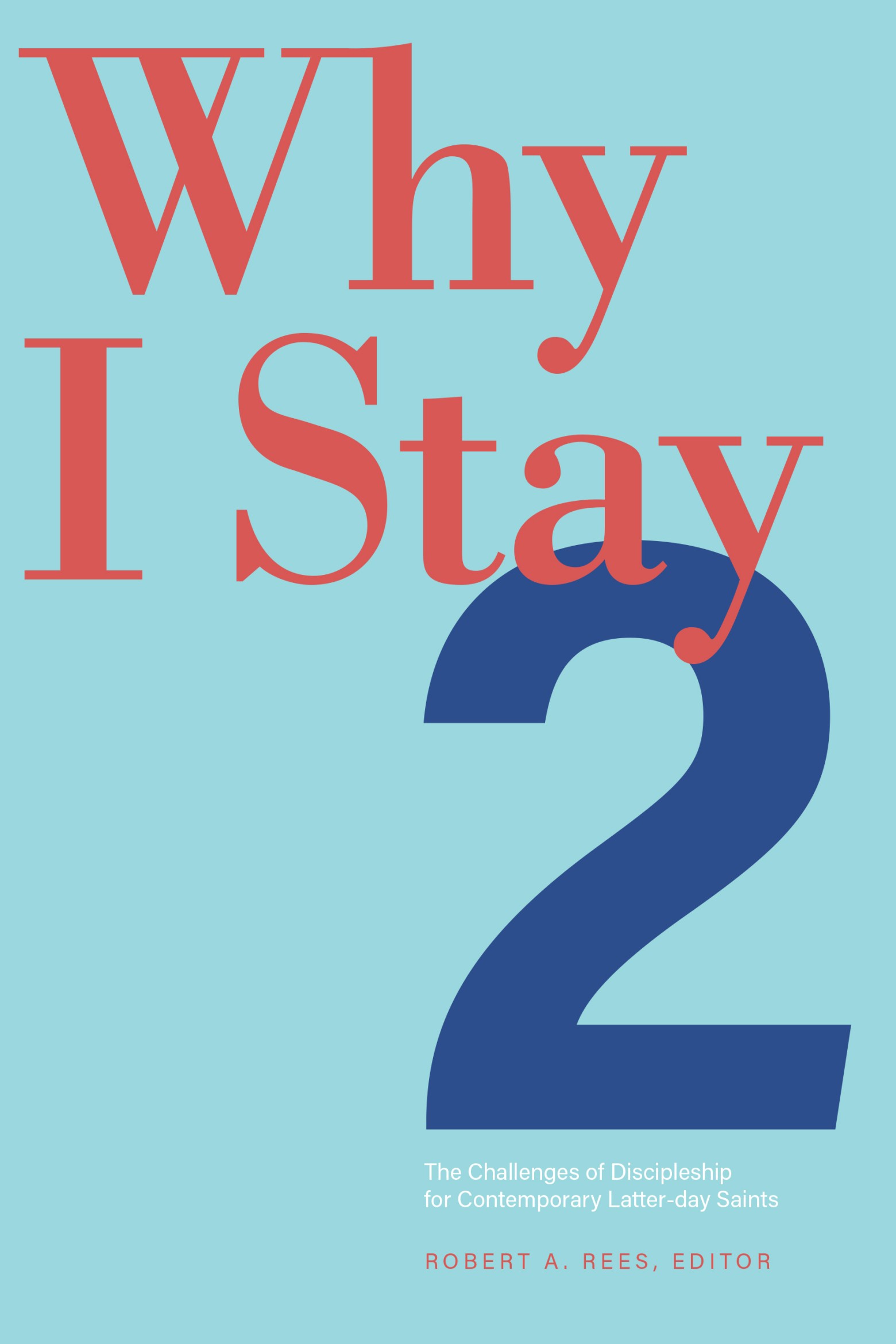W h y
I S t a y
The Challenges of Discipleship
for Contemporary Latter-day Saints
Robert A. Rees, Editor
Signature Books | 2021 | Salt Lake City
2021 Signature Books. Published in the United States of America by Signature Books Publishing, LLC. Signature Books is a registered trademark. All rights reserved. www.signaturebooks.com
The opinions expressed in this book are not necessarily those of the publisher.
Cover design by Jason Francis.
First edition | 2021
Library of congress cataloging-in-publication data
Why I stay : the challenges of discipleship for contemporary
Mormons / edited by Robert A. Rees.
p. cm.
Includes bibliographical references.
ISBN 978-1-56085-291-9
1. MormonsReligious life. 2. Church of Jesus Christ of Latter-day
SaintsMembership. I. Rees, Robert A., 1935- editor.
BX8656.W55 2011
248.4893dc23 2011030893
Editors Introduction:
The Sacred Space at the Edge of the Inside
If you find any earthly institution that is ten
percent divine, embrace it with all your heart!
Laurel Thatcher Ulrich, All Gods
Critters Got a Place in the Choir
The landscape of Mormonism has changed dramatically since the first volume of Why I Stay was published in 2011, and that changed landscape introduces both urgency and complexity to the question of why people stay or dont stay in the Church of Jesus Christ of Latter-day Saints. Many who never expected to consider that question have been asking it of themselvesand having it asked of them by others. It is not as simple a question as it once was.
While there are no reliable statistics on what some refer to as the Mormon faith crisis, there is little doubt that such a crisis exists. One LDS leader characterized it as the most significant faith crises since the time of Kirtland, Ohio, in the 1830s.
What is the nature if the contemporary faith crisis? For the past seven or so years, as I understand, the First Presidency and Quorum of the Twelve have had a document titled LDS Personal Faith Crisis, which is the work of a small independent group of engaged Latter-day Saints deeply concerned about the vulnerability of the church to the erosion of both membership and reputation among the general populace. That document lists four primary factors influencing the faith crisis:
Unprecedented access to information
Continual access to information
Unprecedented content creation and consumption
The Mormon Moment
While the Mormon Moment (which centered on the 2002 Salt Lake City International Winter Olympics, Proposition 8 in California, Mitt Romneys presidential campaign, and the popularity of The Book of Mormon Broadway musical) may have passed, or, at least, diminished, the other factors noted in this report have only grown in influence and significance. That is, the internet and social media have made it possible for nearly every bit of information and every possible point of view about the church and Mormonism to be accessed by millions of people around the world. Another way of putting this is that for the first 170 years of its existence, the church significantly was able to control its own narrative. That is no longer the case. Potentially anyone on the planet with a smartphone has access to nearly everything known about the church, its history, its culture, and its governance, including the unattractive and unsavory aspects contained in that information environmentand including a plethora of myth and misinformation. When the first volume of Why I Stay was published in 2011, the Latter-day Saint presence on the internet was blossoming; since then, it has become a garden full of wonderful flowers but also of weeds and abundant fleurs du mal in which multiple gardeners contend for control.
There is also evidence of Latter-day Saint faith strengthening in some areas, which is related to leaderships attempt to create and maintain Centers of Strength, which consolidate leadership and resources. The church has taken other proactive steps to counter the erosion of membership, including publishing a number of Gospel Topics essays on critical and controversial subjects (see churchofjesuschrist.org/study/manual/gospel-topics-essays/essays). Nevertheless, the church is not immune from its past, its present mistakes and miscalculations, or the effects of a growing secularism in the West, all of which affect the retention of members, not only in the Church of Jesus Christ of Latter-day Saints, but in many faith organizations.
The faith crisis represents not just a failure of faith but also a failure of reason and, especially, a failure of love. Those combined failures have created a situation in which Latter-day Saints are pulled toward opposite ends of the religious spectrum, increasingly divided into camps that tend to see one another as misguided, unrighteous, and even alien. The casualty is the middle ground where dialogue and mutual respect are possible. The polar pullboth in the church and in society in generalaway from the more complex, challenging, and uncertain center, tends toward reductionism and oversimplification of both secular and spiritual life.
David Brooks, the New York Times columnist, identifies these positions as including those who are at the core, those who are on the outside, and those who are at the edge of the inside of an organization. The first tend to be purists and defenders, the second critics and attackers, and the third people [who] are within the organization, but theyre not subsumed by group think. They work at the boundaries, bridges and entranceways. Brooks argues that there is little constructive discourse between insiders and outsiders, each of who tends to demonize the other. Those on the edge of the inside, however, neither idolize those in the center nor demonize those on the outside. Rather they play the role of partners in a reality that is paradoxical, complementary and unfolding.
Brooks draws on the work of the Franciscan priest Richard Rohr, who argues that those who live on the edge of any group are free from its central seductions, but also free to hear its core message in very new and creative ways. Rohr sees such people as doorkeepers: A doorkeeper must love both the inside and the outside of his or her group, and know how to move between these two loves.
Brooks elucidates: A person at the edge of inside can be the strongest reformer. This person has the loyalty of a faithful insider, but the judgment of the critical outsider. A person on the edge of the inside knows how to take advantage of the standards and practices of an organization but not be imprisoned by them. This is similar to the wise advice Juanita Brookss father gave her at a time in her life when she was questioning the certainty and literalness of scripture and various aspects of her faith. She writes,
One day Dad said to me, My girl, if you follow this tendency to criticize, Im afraid you will talk yourself out of the Church. Id hate to see you do that. Im a cowboy, and Ive learned that if I ride in the herd, I am losttotally helpless. One who rides counter to it is trampled and killed. One who only trails behind means little, because he leaves all responsibility to others. It is the cowboy who rides the edge of the herd, who sings and calls and makes himself heard who helps direct the course. So dont lose yourself, and dont ride away and desert the outfit. Ride the edge of the herd and be alert, but know your directions, and call out loud and clear. Chances are, you wont make any difference, but on the other hand, you just might.
I see the contributors to this collection, as I saw those in the first volume, as Latter-day Saints whose discipleship is magnified from the edge of the inside of Mormonism, with fear and trembling (Philip. 2:12), but also with even more love and faith. Their expressions represent a small but influential segment of contemporary Latter-day Saint voices. The writers come from a cross-section of professions (university professors, artists, attorneys, scientists, psychotherapists, entrepreneurs, poets, and others). While not representative of church demographics in general, threeCharles Inouye, Kimberly Applewhite Teitter, and Gloria Pakrepresent ethnic minorities, and half are women. Perhaps in the future, those responsible for selecting participants for the Why I Stay session of Sunstone will invite more non-Americans, minorities, and those of younger generations to give voice to why they stay.



